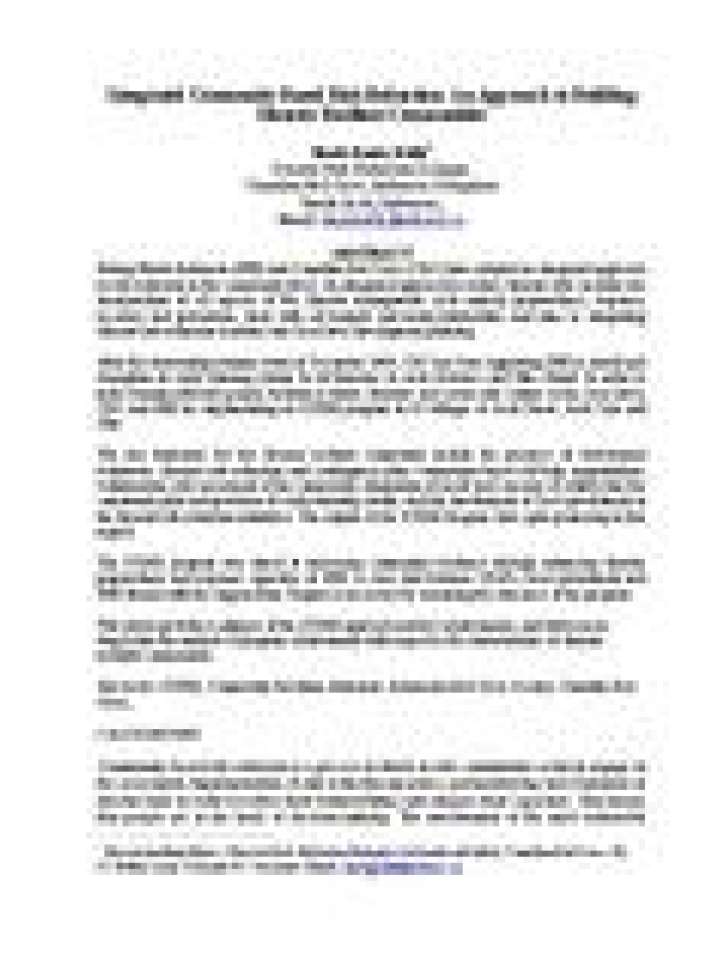Integrated community based risk reduction: an approach to building disaster resilient communities
This study provides a glimpse of the Integrated Community Based Risk Reduction (ICBRR) approach and key achievements from the implementation of a post-tsunami program in 43 villages of Aceh Besar, Aceh Jaya and Nias (Indonesia), and delves more deeply into the analysis of related program achievements with respect to the characteristics of disaster resilient communities.
It asserts that key indicators for a disaster resilient community include the presence of well-trained volunteers, disaster risk reduction and contingency plan(s), community-based self-help organizations, volunteerism, risk assessment of the community, integration of needs and concerns of elderly into the community plan and provision of early warning system, and the involvement of local government in the disaster risk reduction initiatives. It further states that for disaster risk reduction to be efficient, it must be part of an integrated approach to risk reduction (including the incorporation of all aspects of the disaster management cycle namely preparedness, response, recovery and prevention, with all hazards and multi-stakeholders) at the community level.
Background
After the devastating tsunami event of December 2004, the Canadian Red Cross (CRC) began supporting the Indonesian Red Cross Society (PMI) to install and strengthen its early warning system in all branches in Aceh Province and Nias Island. In order to make tsunami-affected people resilient to future disasters and create risk culture at the local level, CRC and PMI implemented this ICBRR program aimed at increasing community resilience through enhancing disaster preparedness and response capacities of PMI. A close link between CBATs, local government and PMI Branch with the support from Chapter is necessary for sustaining the outcomes of the program.
Published with author's permission
Explore further
